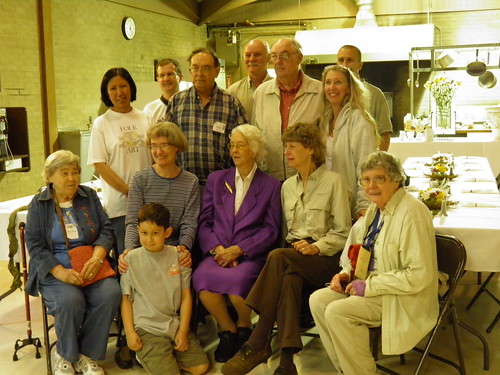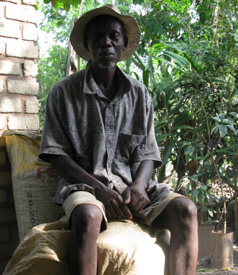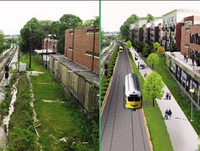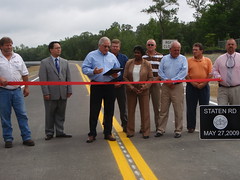
In today’s VDT
Upset about development:
Bill Herndon and his neighbors are unhappy about a development being
built in their backyards.
Marvin Peavy, owner of Peavy Properties, has already rented some of the
Mar-Mel-Go apartments, and about 70 of the projected 150 apartments have
been completed. The other 80 units are scheduled to be added soon.
The two-story apartment buildings rise uncomfortably close to the homes
of Pinebrook Drive residents, such as Herndon. Windows of the complex
look directly into their backyards and homes.
Marvin Peavy, now why does that name ring a bell?
Ah, yes, CEO and CFO of
Lower Lowndes, Inc. the corporation that bought 62.53 acres
on Quarterman Road and
attempted to rezone it from E-A to R-21 back in 2007.
One of the neighbors saw the sign out front and a bunch of us helped convince
the County Commission to deny the rezoning.
This time it’s so bad another developer is complaining:
Robert Eddington also lives on Pinebrook Drive. He is a builder and said
everyone has a right to develop their property. What he’s disturbed
about, among other issues, is that the plans they were shown are not
being followed. Eddington was told most of the trees would be spared
to protect their privacy, but when he came home several days later,
they were all gone except a few.
…
Eddington and his neighbors successfully fought a similar development on
nearby Water Oak Drive four years ago. They had no such opportunity this
time, he said. No notices of any hearing were posted. Neither Herndon nor
Fuhrer saw any notices posted announcing zoning or development hearings
by the Lowndes County Board of Commissioners.
Hm, given that the ULDC got changed a year or so back to require
notification of rezoning mailed to adjoining property owners,
in addition to a notice in the newspaper and a sign out front,
if there was no sign and neighbors didn’t get notices, I wonder
if there’s a legal problem with the rezoning.
Ah, this takes me back:
Eddington’s fence was damaged during Mar-Mel-Go construction. When
contractors finally fixed it 17 months later, he said his wife asked about
the gate that was supposed to be installed. The site manager told his
wife that it wouldn’t be installed until the rest of the apartments
were completed. Eddington said they were originally told these would
be “luxury condos,” but are very different from the way they were
described.
The previous subdivision (not Peavy’s) that did get built on Quarterman Road
(because its zoning was grandfathered in way back in the 1980s)
involved a builder shoving building trash through my fence into my field.
And streetlights that were installed by the developer but never turned on
until the subdivision residents got the Commission to institute a special
tax district to pay for them.
Curious how yet again “the plans they were shown are not
being followed.”
Maybe if the neighbors go to the county they’ll get redress:
Herndon and his neighbors pooled their money several years ago and spent
$4,400 to pave Pinewood Drive, so they feel they have a stake in how
the road is used. He approached the Lowndes County Commission about the
residents’ concerns and was eventually connected with County Engineer
Mike Fletcher.
Fletcher said a $30,000 siren-controlled gate would be installed on
Pinewood Drive for emergency vehicle access only, eliminating unwanted
traffic through their neighborhood. The property owner is responsible
for installing the gate, said Kevin Beals, Lowndes County development
reviewer.
Ah, finger pointing! Not the county government’s problem; it’s
up to the property owner.
Nevermind the county commission approved the development
with certain plans and requirements.
Well, maybe if the neighbors escalate to the county manager:
Lowndes County Manager Joe Pritchard said he thinks Pinebrook Drive
residents “have some legitimate questions and we ought to be able
to provide a reasonable answer.” Pritchard said he plans to meet
with County Engineer Mike Fletcher and Zoning Administrator Carmella
Braswell on Monday to discuss the development and see what remedies
might be available.
Yes, we’ve seen that process many times before.
Note he doesn’t say they’ll provide any actual fixes to any of the
problems, just “a reasonable answer”.
We’ll see if these neighbors get any satisfaction this time.
According to the
County Commission calendar, there’s
a work session coming up Monday 13 July at 8:30AM
and
a commission meeting coming up Tuesday 14 July at 5:30PM.
The Tuesday public meetings always have an agenda item for
Citizens Wishing to the Heard.
The work sessions usually don’t, but if you go you can hear
what the commissioners have to say about subjects that have
come before them, and often you can talk to them directly
before or after the meeting.
 Looking for Longleaf: The Fall and Rise of an American Forest,
by Lawrence S. Earley
Looking for Longleaf: The Fall and Rise of an American Forest,
by Lawrence S. Earley







